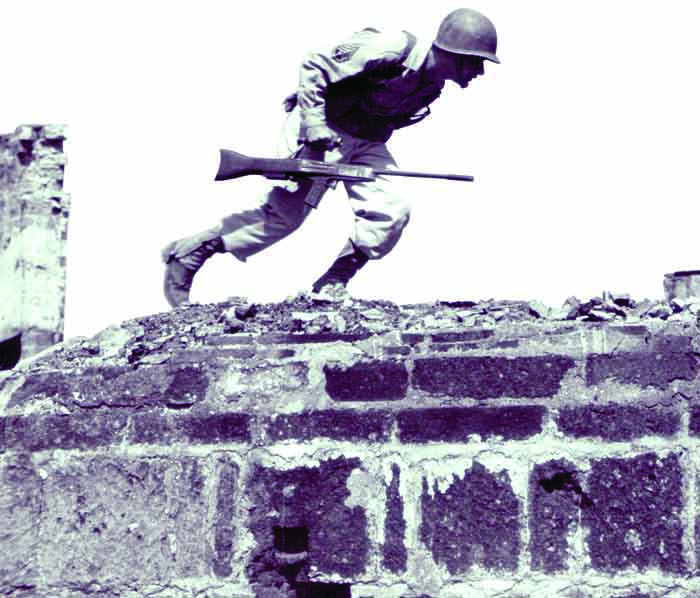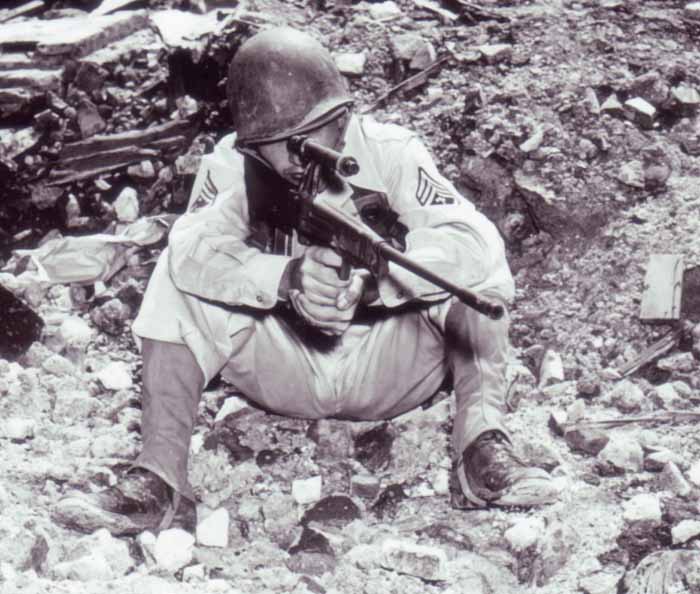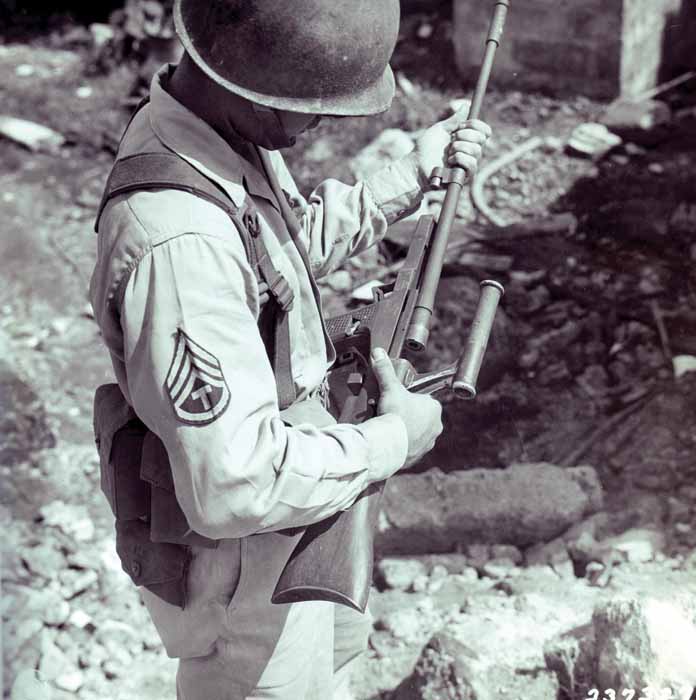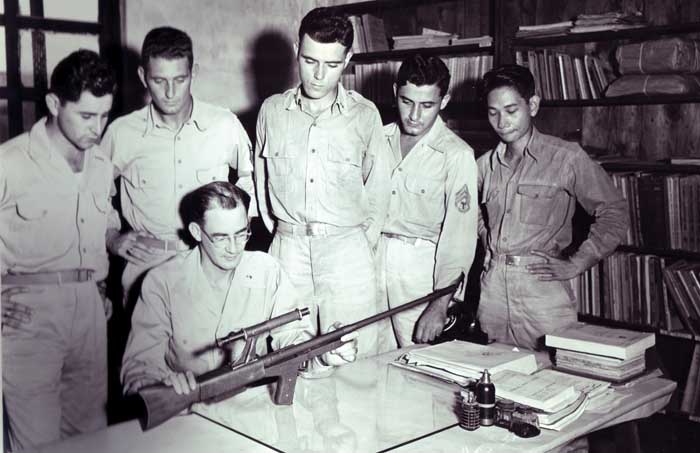By Tom Laemlein
Research for my photo books of US small arms has given me the opportunity to view tens of thousands of images of American weapons in action and in training. In the process I’ve been quite fortunate to find a number of rare photos that show previously unknown variants or strange modifications. However, I’ve never come across photos of any weapon system quite as rare or remarkably innovative as the Model 45A. If you are scratching your head and wondering what I’m talking about, don’t be too concerned. If you happen to know of the Model 45A, you are one of a handful of people in the world. To date, any experts on this curious assault rifle design have been particularly silent.
The photos I found of the gun are contained in the collections of the United States National Archives, and unfortunately, they are not all kept together in the same record group. Regrettably, they are scattered in ones and twos across hundreds of thousands of photos contained in the US Army Signal Corps files. I found these photos quite by accident, and it wasn’t until I had come across about a half dozen of these images before I really started to pay attention to them. Looking closely at the Model 45A, I could hardly believe that it was a gun designed in 1945. The designers were clearly thinking far ahead of their time.

Born in the Philippines, But Where is it Now?
The rather cryptic captions on the Signal Corps photos provided little real information, alternately describing the gun as an “experimental .30 caliber LMG” or a “field expedient .30 cal.” At least, on several photos, the gun was given a name: Model 45A. However, no names were provided for either of the two sergeants photographed with the gun in war-torn Manila, nor were any names provided for the officer or any of the men (including one Filipino man) posing with the gun in an Ordnance Technical office (also in Manila) with the acronym AFWES-PAG. The date given for the photos was October, 1945, a full two months after the war in the Pacific, and WWII itself was over. Based on the evidence we have, it seems likely that the Model 45A was born in the Philippines. But where is it today? Before he retired, I asked Dr. Jack Atwater (then the curator of the US Army Ordnance Museum) if he had heard of the Model 45A or seen it in the Ordnance Museum collection – he had not.

An Incredible Array of Modern Design Features
The Model 45A is a very modern-looking Bullpup design, featuring a particularly long barrel. A Browning Automatic Rifle (BAR) magazine protrudes from the receiver, so we can assume the Model 45A was chambered for .30 caliber ammunition. The pistol grip is particularly futuristic looking and subsequently the “shooters” pose with a more contemporary looking hand placement in their forward grip. The receiver cover looks rather crude and flimsy, and is one of the primary reasons why the Model 45A is suspect as a live gun, but rather a full-sized mock-up. I can’t identify the scope used inside the integral carry handle (very much reminiscent of a modern Steyr-AUG design). The Model 45A is even equipped to launch the M9A1 anti-tank rifle grenade. The buttstock doesn’t look like any US rifle or automatic rifle stock that I recognize, and may have been locally manufactured. As SAR Senior Editor Robert Segel mentioned to me, the Philippines is also famous for their local gun making, and this lends credence to the fact that the buttstock is unrecognizable as a specific US design.
As I was completely stumped by these photos, and could find no reference in my extensive library about this firearm, I turned to my friend Bruce Canfield for help in identifying the design. He e-mailed me shortly after receiving the photos:

“I received the photos today and have looked them over several times. That is a very strange weapon (something of an understatement!). I really don’t understand how the mechanism is functional. I noticed there are no images of the gun actually being fired, only poses. I would suggest that the gun was not functional and was something of a mock-up rather than an operational weapon. The view where the barrel is partially removed from the stock does not depict any sort of bolt or bolt carrier, thus I do not see how the gun could be functional. I could certainly be wrong and this is strictly speculation on my part. On the other hand, based on the limited views of the actual action that are shown, it seems problematic if such a gun could work in its present form. Anyway, it is a fascinating weapon and I wish more information could be obtained.
Thanks again for sending the photos of that most interesting weapon and if I ever find out anything else (fat chance!), I’ll be sure to let you know immediately.”

In a later e-mail, Bruce followed up on my thoughts about the rather large number of photos taken of a “one-off” design, concept gun, or odd in-theatre mock-up:
“I agree that somebody wanted to be sure the “M45-A” was shown in a number of action poses, but I still have doubts it was functional. It may have been some sort of mock-up design concept. In any event, we’ll just have to add it to the ever-growing lists of little-known military weapons.”
Who Designed the Model 45A, and Why?
All of this raises more questions than it answers. Who designed the Model 45A? What motivated them to do so? And what were their influences to create such a futuristic design in the waning days of the Second World War? One thing is for certain, that the Model 45A is a highly unique design, and if it was shown to the right people, it may have been rather influential in modern American rifle design.
After looking over these photos, we hope that the readers of Small Arms Review will notice other interesting details of the Model 45A, and if anyone has information regarding the identity of its designer, the unit that made it, and where the gun is today, we’d love to hear from you.

| This article first appeared in Small Arms Review V13N4 (January 2010) |












